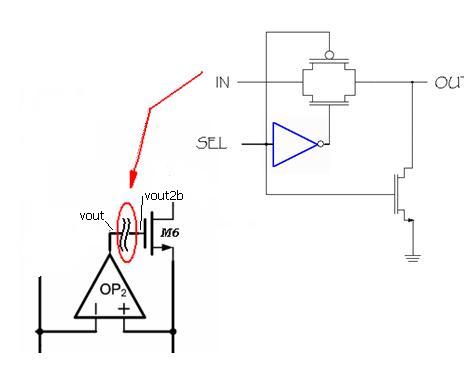Follow along with the video below to see how to install our site as a web app on your home screen.
Note: This feature may not be available in some browsers.


Azmi said:for better response, all the transistor should be big enough so that the on-resistance is as small as possible. however, since your freq operation is 20Mhz, then the transistor must not too big because if the parasitic capacitance is very big, then the output will be spoiled. in my opinion, for this case, try-and-error is the best method to go.





You see, a Pwr MOS hase input C of 1-2 nF or more...keith1200rs said:I suggest you try to isolate which part is the problem... Try the opamp on its own with your 20MHz signal and no load. Is it fast enough? ...Keith.
